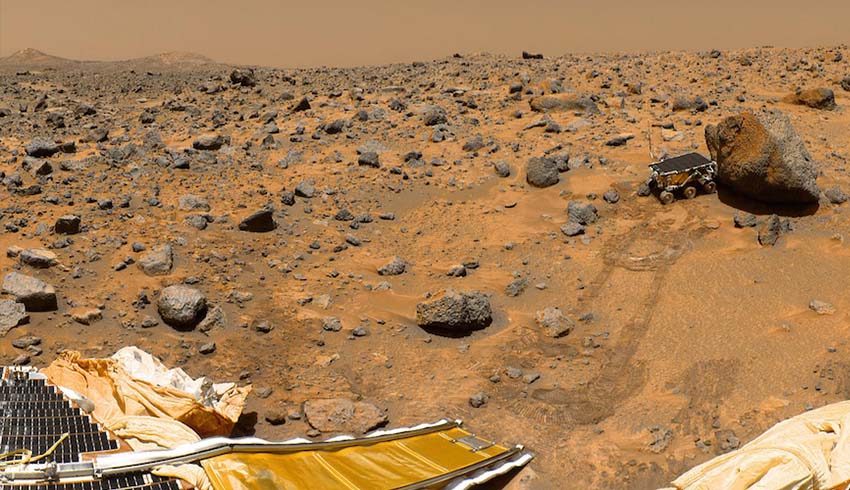Has there ever been life on Mars? Reconstructing the history of our neighbouring planet and understanding how its evolution diverged from that of Earth is at the heart of Mars exploration missions.
ESA’s first journey on this quest began 16 years ago – on 2 June 2003, with the launch of Mars Express. The orbiter has imaged almost all of the planet’s surface to date and continues to return a wealth of scientific data, including evidence for its wetter past. And where there was water, there may have been life.
In 2016, ESA and Roscomos launched the 3.7-tonne ExoMars Trace Gas Orbiter (TGO), the heaviest spacecraft operating at Mars today. Dedicated to analysing the planet’s atmosphere in greater detail than ever, it is making a census of the gases present and to find out if any have a biological or geological origin.
The spacecraft is also providing a global map of water distribution in terms of water-ice or water-hydrated minerals in the shallow sub-surface of Mars.
TGO is also a key provider of data-relay services to NASA’s Insight lander and Curiosity rover on the surface of Mars. It will be the primary communications relay for the second ExoMars mission, which comprises a rover and surface science platform.
It is on track for launch in July 2020 and will arrive at Mars in March 2021. TGO is already getting ready for the new arrival: next month it will make adjustments to its orbit to ensure it will be in the correct position to support the entry, descent and landing of the descent module.
After driving off the surface platform and studying its surrounds, the rover, named Rosalind Franklin, will locate scientifically interesting sites to examine. It will retrieve samples from two metres below the ground, where they are protected from the harsh radiation that bombards the surface, for analysis in its highly advanced onboard laboratory to search for evidence of life.
NASA’s 2020 Mars rover will also land in early 2021 to explore the delta of an ancient river. Alongside its own scientific goals, it will collect and store soil samples in pen-sized canisters, ready for a future pickup and return to Earth – the next logical step in the robotic exploration of Mars.
The Mars Sample Return concept needs three different missions and an international effort; Europe is a key partner and NASA’s 2020 rover is just the first step. ESA is studying concepts for a small and agile ‘fetch’ rover to recover the stored samples and carry them to a football-sized canister to launch from a NASA-led landing platform and Mars ascent vehicle. A third mission would be an ESA-led spacecraft sent from Earth to Mars orbit that will locate the orbiting canister, capture it and return it safely to Earth.
The Earth return orbiter will use technological heritage from ESA’s most recently launched science mission, BepiColombo: both use electric propulsion and multi-stage detachable modules. To catch the canister of samples, it will also use technological heritage in autonomous rendezvous from the European-built Automated Transfer Vehicles that supplied the International Space Station with cargo, fuel and oxygen.
Europe is also participating in JAXA’s Martian Moons Exploration mission that will survey the two moons of Mars and bring a sample from Phobos back to Earth, to better understand the origin of the planet’s moons.
"While we continue to maximise the science return from our two Mars orbiters, we are also gearing up for a safe landing and roving across the planet’s surface," explained David Parker, ESA’s director of human and robotic exploration.
"To secure our future in Mars exploration, looking towards human exploration of the Red Planet, we are already planning the next logical steps – a robotic sample return mission as the first round-trip to the surface of Mars. NASA’s 2020 rover mission will soon be in place as the first step of this challenging mission. Now we want to finish it."
ESA has demonstrated expertise in studying Mars from orbit, now we are looking to secure a safe landing, to rove across the surface and to drill underground to search for evidence of life. Our orbiters are already in place to provide data relay services for surface missions.
The next logical step is to bring samples back to Earth, to provide access to Mars for scientists globally, and to better prepare for future human exploration of the Red Planet.

